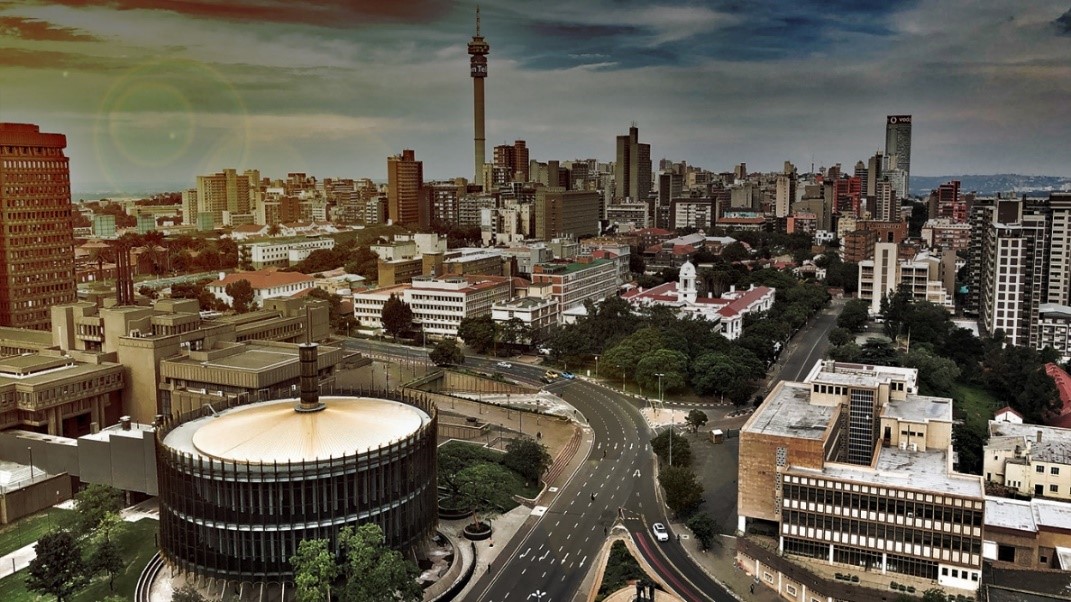 Photo Credit: Clodagh da Paixao
Photo Credit: Clodagh da Paixao
Johannesburg is perhaps best known as the city in which the late Nelson Mandela cut his teeth as a young lawyer. He arrived in the city from the University of Fort Hare, located in what is now the rural Eastern Cape Province of South Africa with degrees that enabled him to work as a lawyer. It was in Johannesburg that he became a politician, and was later sentenced to life in prison for his involvement in the struggle against Apartheid.
The city of Johannesburg was established in the 1880s following the discovery of gold in the area of the Province now called Gauteng, which in the SeTswana language, means the place of gold. It was named after two officials of the Zuid-Afrikaanse Republiek (ZAR), Johannes Meyer and Johannes Rissik.
Thousands of people flocked to the area in search of fortune and new opportunities at the time. Whilst the system of racial segregation hadn’t then been formalized, for many white South Africans, the discovery of gold offered avenues for enrichment and formed the basis of the establishment of vast empires of wealth that persist to this day. For their black compatriots, the gold mines offered opportunities for wage employment, necessitated by new taxes which had to be paid in cash. From then on, the trip to Johannesburg and its surrounds became a rite of passage for millions of men from rural South Africa and many neighbouring countries. As South Africa’s chief industrial and financial metropolis, Johannesburg still attracts those from within and without the country who want to realise their dreams and achieve success.
An important part of the city and its history is the sprawling ‘township’ of Soweto – the South Western Township – which was established as the dormitory settlement for black, non-mine workers required for a burgeoning economy. Two Nobel Prize winners, Nelson Mandela and the late Emeritus Archbishop Desmond Tutu resided several houses away from each other on Vilakazi Street in the suburb of Orlando West in Soweto.
Soweto is also renowned for the uprisings that started on June 16th 1976, through which high school students protested against the injunction by the Apartheid system that their medium of instruction should be in Afrikaans, the language of the majority white people in power at the time. The revolt led to a new phase of the struggle against Apartheid which was led by young people, instigating efforts both inside and outside the country to end South Africa’s system of racial segregation.
Johannesburg has a rich artistic tradition and has produced such achievers as Nadine Gordimer, winner of the 1991 Nobel Prize in Literature, the Grammy Award winning singer Mariam Makeba who honed her talents in the city, the Grammy Award nominated jazz trumpeter Hugh Masekela, fine artists Gerard Sekoto and William Kentridge, and many others. The cultural life of the city remains vibrant and there are many art galleries, live music venues and theatres with an eclectic variety of offerings.
Covering an area of 3 357 km, Johannesburg had a population of 5 635 000 inhabitants in 2019.
Since the inauguration of Nelson Mandela as the first democratically elected president in 1994, Johannesburg has been the site of many iconic events. The Springboks, the South African national rugby team beat New Zealand’s All Blacks at the Rugby World Cup Finals in 1995; Bafana Bafana, the national soccer team won the African Cup of Nations in 1996; and in 2010, South Africa hosted the FIFA Soccer World Cup to much success; the final, won by Spain, was played at Soccer City, on the outskirts of the Soweto.
Fun Facts About Johannesburg
- Johannesburg and the surrounding areas are home to almost half the world’s human ancestor fossils, and the Cradle of Humankind was declared a UNESCO World Heritage Site in 1999;
- It is home to the world’s largest human-made forest and is one of the greenest cities in the world;
- It is South Africa’s largest and most populous city and the country’s economic powerhouse;
- It boasts the tallest building in Africa, the Hillbrow Tower, a whopping 270 meters tall;
- OR Tambo International Airport in Johannesburg which receives over 21 million people annually is the largest and busiest in Africa;
- The city enjoys an average of 12 hours of sunlight a day.

 Photo Credit: Clodagh da Paixao
Photo Credit: Clodagh da Paixao